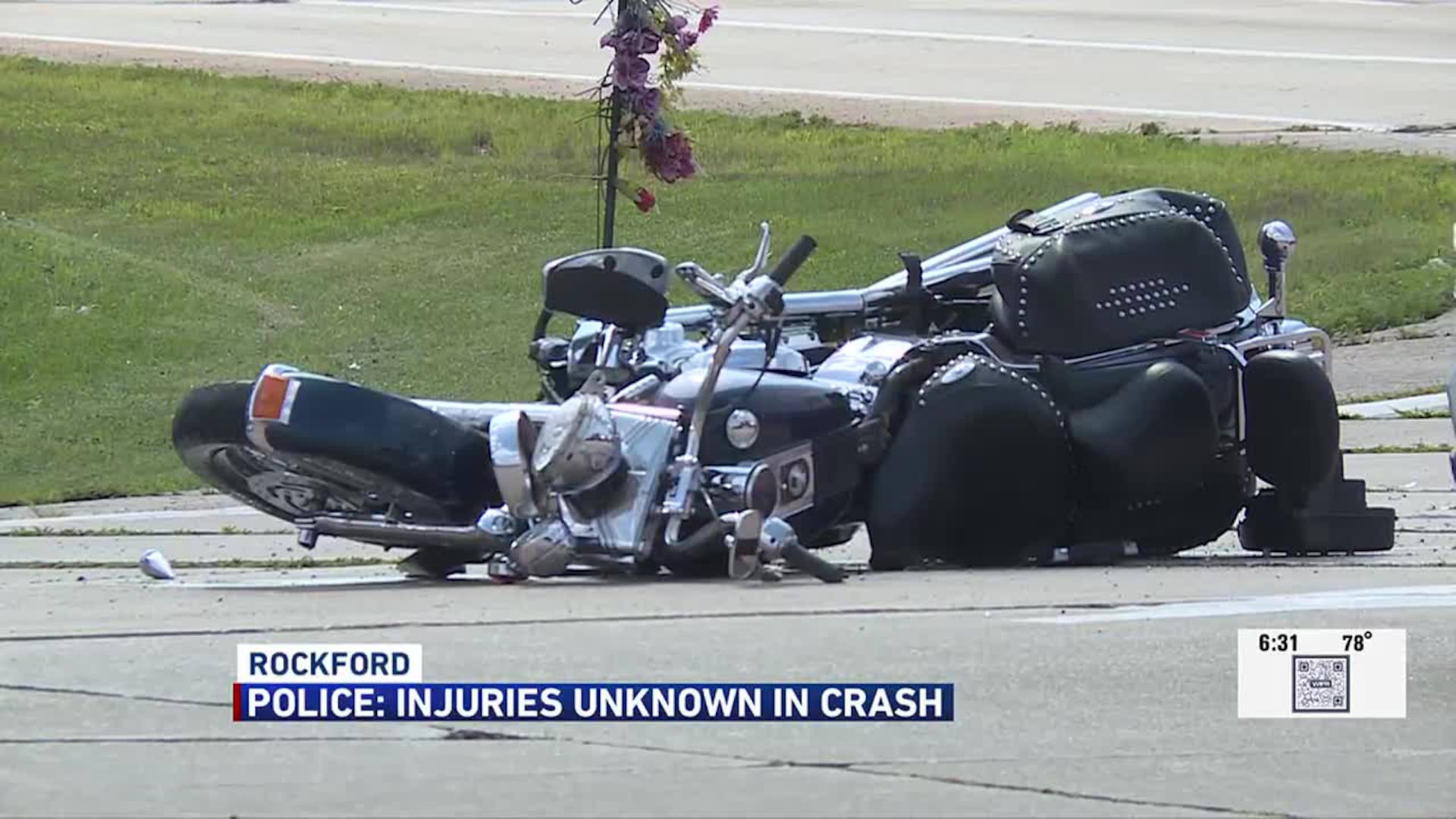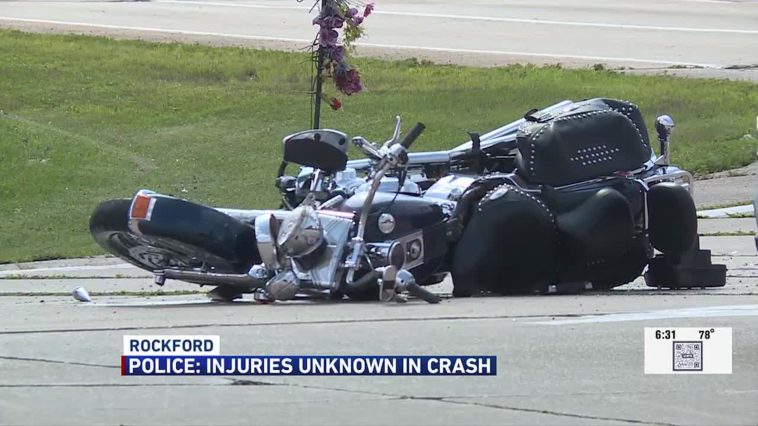

Motorcycle Safety: Learning from Rockford’s Recent Tragedies
In the wake of two consecutive fatal motorcycle accidents in Rockford, local riders and instructors are coming together to reflect on the lessons that underscore the importance of rider safety. Recent events have left the community shaken, reminding everyone just how nerve-racking and unpredictable riding on two wheels can be. This opinion piece takes a closer look at safe riding practices, the role of proper training, and the essential use of protective gear.
Motorcycle riding is not just about the freedom of the open road—it carries with it a packed schedule of challenges and tricky parts that require constant vigilance. With accidents occurring back-to-back, the local community is once again forced to grapple with those very tangled issues while trying to figure a path through these events. As we unpack the situation, it is important to consider rave testimonials from experienced riders and instructors who have seen firsthand how investments in safety, such as LED lights upgrades, can provide that extra layer of reassurance.
Reflecting on the Impact of Back-to-Back Motorcycle Crashes in Rockford
The recent string of events in Rockford has left the biking community mourning and contemplating the hidden complexities and fine points of motorcycle safety. Two riders lost their lives over the weekend—one on Friday and the other on Saturday. This spate of tragedies has brought forward the lingering pain and the weight of responsibility amongst motorcyclists, who regard their community as one big family where every loss is felt collectively.
The combination of abrupt accidents in a short time span forces us to consider how crucial it is for both riders and drivers to be constantly alert, especially in congested urban areas. For riders, even an investment as seemingly small as a set of $1,000 worth of LED lights on a motorcycle has proven, according to local motorcyclist Mark Schwendau, to provide an essential boost to both safety and confidence on the road. Schwendau, whose experiences range from near-miss collisions at local events like the Green County Cheese Days to his subsequent career as a driving instructor, shared how these upgrades have made a palpable difference. He describes this as more than just the enhancement of visibility—it is a tool that contributes, in real time, to preventing tragedies.
Understanding the Realities of Motorcycle Safety: From Near-Misses to Fatal Crashes
Numbers on paper only tell part of the story. The real-life experiences of those who ride every day reveal a landscape filled with tricky parts and complicated pieces that are often underestimated until tragedy strikes. In Rockford, drivers, and riders alike have witnessed that even a momentary lapse—resulting in a car coming shocking close to a motorcyclist’s wheel—is enough to disrupt what might have been a routine journey. Mark Schwendau’s account of his own brush with disaster—where his front wheel came within two feet of a car’s fender—serves as a stark reminder that these incidents are not confined to textbooks, but occur in everyday life.
The vital lesson here is that the impact of these collisions transcends the immediate moment. The experience becomes a memory and a lesson that can nudge riders towards safer habits. It emphasizes the responsibility that motorcyclists have to be keenly aware of their surroundings and to invest in the little details—be it better lighting, more advanced protective gear, or even simply a renewed sense of focus.
Essential Protective Gear: More Than Just Legal Compliance
One of the most super important elements of motorcycle safety is protective gear. For motorcyclists, items such as helmets, goggles, and even windshields are not just accessories, they are life-saving equipment. The riders in the Rockford community, along with educators like Brad Jennings and Ben Wolfe, have underscored that while advanced techniques and modern training are critical, nothing should ever replace the fundamental importance of a reliable helmet.
In fact, safety gear is frequently the line between injury and survival. While instructors always recommend an all-around approach to safety—including avoiding distractions through devices like cell phones—gear is the baseline measure for protection when accidents happen. Using a table to compare basic safety gear reveals both its benefits and its limitations:
| Safety Gear | Primary Benefit | Additional Notes |
|---|---|---|
| Helmet | Head protection, reduces trauma in collisions | Considered the bare minimum; saves lives in most crashes |
| Goggles | Protection against debris and wind | Enhances visibility during adverse weather conditions |
| LED Lights | Improved visibility at night | An investment that increases confidence and safety |
| Windshield | Deflects wind, debris, and insects | Adds another layer of protection without compromising control |
The above table is an abridged guide to understanding why taking safety gear seriously is not just about following the law—it’s about ensuring that every trip is as safe as it can be, even when the road is full of complicated pieces and unexpected challenges.
Training and Education: Learning to Handle the Road’s Twists and Turns
No debate about motorcycle safety can ignore the role that proper training plays. Local riding schools like Kegel Harley-Davidson Riding Academy have been making a significant effort to provide well-rounded courses that help riders of every skill level get around the tricky bits of intersecting traffic and unpredictable roadways. Whether one is a complete newcomer or a seasoned rider needing to brush up on skills, training classes lay out safe techniques to manage head movements, reduce speed on tight curves, and anticipate hazards well in advance.
For instance, Brad Jennings, an experienced riding instructor and the manager of the academy, emphasizes a critical point: proper training is not a luxury, but an essential investment in the safety and longevity of every rider’s journey. His classes specifically focus on intersections and curves—areas known to be loaded with issues where accidents frequently occur. This practical advice is well worth noting:
- Maintain a constant head movement to monitor for hazards, especially at intersections
- Approach curves with a smooth, deliberate reduction in speed
- Anticipate the possibility of oncoming traffic or sudden lane changes
- Continue education through refresher courses available seasonally
These points may seem obvious when written down, yet they are some of the most effective small distinctions that separate a safe ride from a dangerous one.
Insights from Law Enforcement: Applying the Nitty-Gritty of Police Techniques
Another perspective that contributes meaningfully to the discussion about motorcycle safety comes from individuals who have worked directly on crash scenes. Ben Wolfe, who brings his law enforcement background to the training environment at Lock and Lean Precision Motorcycle Riding, develops courses that focus on the precision tactics used by police officers who often have to steer through chaotic and off-putting traffic situations.
Wolfe’s approach boils down to a fundamental principle: understanding speed and distance can be a game changer in preventing crashes. His teachings shift the focus toward developing practical skills to manage sudden traffic changes. For example, his recommendations frequently include:
- Always have an emergency exit plan—know your surroundings and anticipate potential hazards
- Keep a safe distance from other vehicles to allow ample reaction time
- Learn the technique of deep leaning for sudden avoidance maneuvers
- Regularly review what went wrong in previous accidents to learn how to adapt in real time
By applying this kind of investigative thinking and using the lessons from past motorcycle accidents to inform current practices, instructors like Wolfe help riders make sense of the loaded environment they operate in.
Getting the Message Across: The Role of Communication in Rider Safety
Most importantly, the aftermath of the Rockford accidents has highlighted the need for better communication between riders, instructors, and even drivers. In situations that are sometimes on edge, spreading the word about best practices, heightened awareness, and continuous training is super important.
Communication within the motorcycle community—and between motorcyclists and drivers—plays a crucial role in preventing future tragedies. Some of the strategies suggested by local experts include:
- Utilizing community gatherings, rider meetings, and online platforms to share safety tips
- Implementing local outreach programs and public service announcements that target both riders and car drivers
- Encouraging feedback and open dialogue between instructors and students to better understand the small distinctions of safe riding techniques
- Creating a repository of lessons learned from each incident that can serve as a guide for newer riders
This exchange of information is not more than a typical community drive—it’s a super important measure that can steer through the confusing bits and turn tragic experiences into valuable learning opportunities.
Lessons Learned: A Community United in the Face of Tragedy
The tragic events in Rockford serve as a glaring reminder that life on two wheels is full of problems that require precise handling and constant vigilance. Riders like Schwendau, who have navigated their way through narrow escapes and near misses, reiterate a message that cuts through the tension: accidents are very preventable by simply being cautious and using good judgment.
Within the motorcycle community, there exists a strong sense of camaraderie—almost a brotherhood and sisterhood—where the loss of one rider resonates deeply with all. This collective grief is often accompanied by an equal measure of resolve to learn the necessary lessons from each incident. Riders know firsthand that, beyond the technical skills of riding, eyeing one’s surroundings with acute awareness often makes the difference between safety and calamity.
Consider the following key points as guiding principles for any motorcyclist:
- Invest in quality safety gear and regular maintenance to ensure all equipment functions properly
- Engage in regular training sessions to refresh your understanding of handling tricky traffic scenarios
- Practice defensive riding skills to better prepare for unexpected hazards
- Maintain open lines of communication with fellow riders and local authorities to stay updated on safety protocols
Every lesson, whether it comes from personal experience or through formal classes, is a small twist in the larger tapestry of public safety awareness. By working together and sharing these insights, the community hopes to create a more connected and cautious riding culture.
How Motorcycle Training Programs Can Change the Game
Nothing beats the real-life impact of structured training programs in reducing the nerve-racking impact of riding in congested, unpredictable traffic environments. These programs are designed not just to showcase techniques, but to instill a habit of continuous safety and awareness. Instructors carefully break down the routine riding experience into manageable segments—addressing intersections, curves, and even the subtle parts of road reading—that can make all the difference when danger appears unexpectedly.
These classes serve as a platform to discuss not only the mechanical aspects of riding but also the human factors such as reaction time, situational awareness, and emergency maneuvering. The focus on small distinctions and subtle parts is super important, as it allows newer riders to figure a path in conditions that might otherwise seem overwhelming.
A snapshot of key elements taught in these programs include:
- Intersection Awareness: Techniques on how to monitor multiple angles simultaneously, ensuring that every head movement is purposeful.
- Curve Management: Practical advice on reducing speed gradually and ensuring a smooth transition through bends, minimizing the risk of skidding.
- Emergency Maneuvers: Training riders to quickly identify escape routes in heavy traffic and anticipate actions by both drivers and pedestrians.
- Protective Gear Education: Reinforcing the importance of helmets, gloves, and other equipment as indispensable parts of every ride.
By integrating these techniques into everyday practice, the community is better poised to take on the tangled issues found on crowded roads and busy highways. The changes in training approach not only prepare riders for emergencies but also help them steer through roads where even slight distractions can have severe consequences.
Strategies for Drivers: Coexisting Safely with Motorcyclists
It isn’t just motorcyclists who bear the responsibility for preventing accidents—drivers also have a pivotal role to play. A significant part of the conversation surrounding the Rockford crashes revolves around the contribution of inattentive driving on the part of car drivers. Local riding instructors have pointed out that many of these accidents could have been avoided if drivers took a moment to set aside distracting devices such as mobile phones.
For car drivers, the take-home message is clear. Here are a few bullet points summarizing key recommendations for coexisting safely with motorcyclists:
- Always check blind spots before changing lanes or making turns
- Be aware of motorcyclists riding alongside, especially at intersections
- Avoid using mobile phones or other distractions when behind the wheel
- Maintain a safe distance from motorcycles to ensure that they have ample room to maneuver
By being attentive and respecting the space occupied by motorcyclists, drivers help in reducing the nerve-racking potential of close calls and near-miss incidents. This is a shared responsibility—one that, when met, can turn tense road situations into smoother, safer rides for everyone.
Community Engagement: Creating Awareness Through Local Initiatives
In the broader context of motorcycle safety in Rockford and beyond, community engagement plays a super important role. Local authorities, riding schools, and community organizations have an opportunity to work together by organizing events and discussions that focus on safety. Programs such as free safety seminars, interactive riding demonstrations, and public forums can help spread crucial safety messages.
A community-driven safety campaign might feature:
- Safety Workshops: Hands-on sessions where experts explain the fine details of riding in high-traffic conditions.
- Public Safety Announcements: Coordinated efforts between local authorities and riding schools to broadcast key safety tips via local media.
- Rider Meetups: Opportunities for experienced motorcyclists to share personal stories and lessons learned with beginners and intermediate riders alike.
- Collaborative Training Programs: Partnerships between riding schools and law enforcement to offer courses that integrate practical police techniques and personal safety strategies.
By taking a closer look at these initiatives and actively participating in them, the entire community can help reduce the loaded conditions that often lead to tragedy. The creative exchange of ideas and experiences not only beautifies the local riding culture but also reinforces the critical value of being well-prepared on the road.
Balancing Freedom and Responsibility on Two Wheels
Motorcycle riding inherently symbolizes freedom and adventure. However, that same freedom comes with an equally intimidating responsibility. For many riders, every journey is a blend of exhilaration and caution—a continuous balancing act of steering through the fine points of everyday road challenges while holding on to the spirit of independence.
The recent tragic events in Rockford force us to take a step back and consider that the freedom to ride must always be balanced with the need for responsibility. Riders, instructors, and even drivers must acknowledge the nerve-racking reality that every trip could present unexpected twists and turns. This balanced approach isn’t only about reducing risks—it’s also about creating an environment where all road users can share in the experience safely.
The responsibility falls not only on individual motorcyclists but also on the entire community. Whether it’s through investing in the right safety gear, engaging in ongoing training sessions, or simply committing to being more aware on the road, the collective actions of all involved can turn these challenging moments into learning opportunities that make a positive change.
The Future of Motorcycle Safety: Building a Culture of Continuous Improvement
Looking ahead, the emphasis on safety must be relentless. The tragedies in Rockford can serve as an alarm bell—a call to action for every rider and driver to be more alert and dedicated to improving riding standards. The key to achieving this lies in adapting continuously, ensuring that modern technology, proven safety techniques, and community-driven efforts all work in synergy.
Local training programs are constantly evolving to include the latest advances in motorcycle safety. For example, more advanced riding simulators and on-road coursework are being introduced to help riders get into the nitty-gritty of handling complex traffic scenarios. The focus isn’t just on theoretical knowledge but also on practical applications that mirror real-world conditions.
A focus on continual improvement might include:
- Enhanced training modules that incorporate real-time feedback from experienced riders
- Regular community safety audits to identify and mitigate potential hazardous zones
- Periodic refresher courses aimed at all age groups, ensuring that new riders learn the ropes while seasoned riders update their skills
- Integration of new safety technologies such as adaptive LED lighting systems and collision detection devices
These measures are a testament to the dedication of not only individual instructors like Brad Jennings and Ben Wolfe but also to the broader motorcycle community, which is determined to make every ride as safe as possible. While the road ahead may be loaded with issues, a combined effort from all stakeholders will help in managing your way through even the most challenging conditions.
Taking a Closer Look at Government and Regulatory Roles
In addition to community and individual initiatives, government regulations and road safety policies play a super important role in keeping motorcycle riding safe. Government agencies have the responsibility to set guidelines, conduct safety audits, and enforce laws that save lives. These guidelines serve to protect all road users, especially in regions that struggle with densely populated traffic zones and complicated road layouts.
It is encouraging to see that in many cities, local governments are beginning to take a more proactive stance. They are not only reviewing traffic laws related to motorcycle safety but also launching campaigns aimed at educating drivers about sharing the road with motorcyclists. As part of these campaigns, traffic safety organizations often recommend:
- Strict enforcement of distracted driving laws
- Improved roadway signage and better marked lanes for motorcycles
- Public awareness campaigns that highlight the importance of double-checking blind spots
- Collaborative efforts with local businesses to sponsor safety events and provide training resources
By taking these measures, government initiatives can address several of the nerve-racking and overwhelming challenges that motorcyclists face daily. When regulators, law enforcement, and the community work hand in hand, it creates a safety net that benefits everyone on the road.
Encouraging a Change in Attitude Among All Road Users
At its core, the recent tragedies in Rockford serve as a poignant reminder that safety is a shared mission. Both motorcyclists and drivers need to adopt attitudes that are responsive to the small distinctions and hidden complexities of modern traffic environments. It starts with recognizing that every individual decision, no matter how minute, can have a ripple effect on overall road safety.
For motorcyclists, this means not only investing in better gear or refining riding techniques but also advocating for clearer communication with drivers. For drivers, it means setting aside distractions, such as the ubiquitous mobile phone, and focusing on the road. Embracing these subtle parts of responsible road usage can transform chaotic traffic situations into more predictable and manageable events.
The ultimate goal is to foster an environment where every road user feels empowered to contribute to greater safety standards. When both sides—the ones riding on two wheels and those in four-wheeled vehicles—commit to continuous, small improvements, they eventually build a culture that leaves little room for preventable accidents.
Final Thoughts: A Call for Unified Safety Efforts
In closing, the recent deadly incidents in Rockford should be seen as a call to action rather than simply tragic events. They shine a light on the nerve-racking and sometimes overwhelming challenges that define the motorcycle experience in today’s world. Every near-miss and every fatality reinforces the importance of careful planning, proper safety gear, and ongoing education.
Motorcycle riding, with all its freedom and excitement, also demands a hefty dose of responsibility. Whether it is investing in that extra set of LED lights for better visibility or dedicating time to a comprehensive riding course, every small twist in the pursuit of safety matters. The passionate voices of experienced riders and dedicated instructors remind us that the road is full of surprising turns—and that being prepared is not optional, but essential.
As the community works through the complicated pieces of these recent tragedies, the conversation about safety will continue to evolve. The involvement of local governments, riding schools, and advocacy groups provides a strong framework not only for preventing further accidents but also for building a legacy where every journey on a motorcycle is as safe as it is liberating.
Now more than ever, it is super important for everyone involved to pause, reflect, and commit to continuous improvement. Whether you are a new rider learning the ropes or a seasoned veteran who has seen it all, remember that every experience can be transformed into a lesson—the kind of lesson that helps all of us take a closer look at what it means to ride safely in an ever-changing landscape.
In our busy, sometimes confusing world, the collective responsibility towards motorcycle safety is a challenge that no one can ignore. It is up to every motorcyclist, every instructor, and every driver to ensure that tragedy is not repeated, and that every ride is not only a testament to personal freedom but also a celebration of life, caution, and lifelong learning.
Let us use the lessons from Rockford as an opportunity to reinforce our commitment to safety, to support hands-on training and education, and to communicate openly about the nerve-racking realities of riding. By doing so, we honor those we have lost and create a safer, more prepared environment for all who share the road. The time to act is now—after all, every ride is a reminder that when it comes to safety, small actions can make a big difference.
Originally Post From https://www.wifr.com/2025/08/03/motorcyclists-stress-safety-after-back-to-back-deadly-crashes-rockford/
Read more about this topic at
Preventing Tragedy in Youth Sports: The Crucial Role of …
Preventing workplace tragedies


